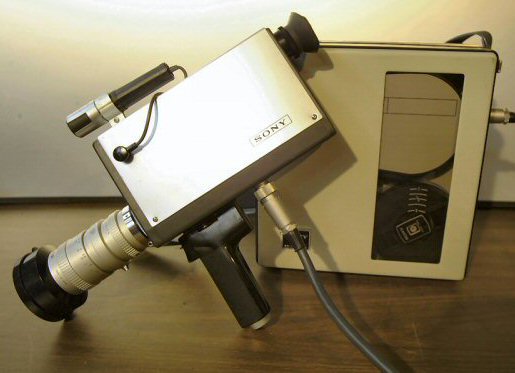Please wait a few moments while we process your request

Yvonne Spielmann, Video and Computer
The Aesthetics of Steina and Woody Vasulka
The Art of Intervention
Avant-garde video art is characterized by synthesized imagery, the manipulation of existing tools and devices (construction equals deconstruction), and artists working together with engineers and programmers to develop new tools. In the sense that the avant-garde always involves a double — that is, technological and cultural intervention at the same time — the early video avant-garde foregrounded and pre-shaped what decades later would be called "electronic culture" and "new media." In retrospect, Nam June Paik managed to be the first: the first to use a Portapak camera for video art (a), the first to succeed in "exhibiting" electronic media as an object (i.e., his early magnetic manipulations and critique of television). Gary Hill approached the articulation of electronic language by contextualizing and comparing visual and spoken languages. For Steina and Woody Vasulka, electronic imagery is essentially different from culturally dominant concepts of the "image" as entity. Their "images" make visible the specific capacities of video in terms of multidimensional and omnidirectional characteristics, including forms that express variable formats where images appear as objects. The Vasulkas radicalize the theoretical statement by truly exploring the dimensions and directions of electronic imaging and its immersive potential by starting with the manipulation of the electronic signal with its aural/visual ambivalence. Needless to say, their video transgresses the surface level of presentation towards sculptural dimensions. The artists’ statement can be viewed as a counter-argument to theories that video lacks "depth of space/profondeur."
Not only experimental in terms of the unusual use of hand-built tools (which has its conceptual parallel in the approaches of structuralist/materialist films of the 1960s and 1970s), the work of the Vasulkas moves farther because of their intermedial thinking in regard to the complexity of experiments pursued. On the level of patching together machines and attempting to exhaust the capacities of whatever technology is at hand, the challenges are viewed as a necessary means for finding out what articulates video. Notably, this work was done from scratch because in the early 1970s the medium was just emerging and had yet to develop a semiotic-cultural level of media reference, and, eventually, a specificity of its own. In its emerging phase, video was a void medium in a dual sense, technically and technologically, which the Vasulkas wanted to engage in ways that differed from film and television.
Not only experimental in terms of the unusual use of hand-built tools (which has its conceptual parallel in the approaches of structuralist/materialist films of the 1960s and 1970s), the work of the Vasulkas moves farther because of their intermedial thinking in regard to the complexity of experiments pursued. On the level of patching together machines and attempting to exhaust the capacities of whatever technology is at hand, the challenges are viewed as a necessary means for finding out what articulates video. Notably, this work was done from scratch because in the early 1970s the medium was just emerging and had yet to develop a semiotic-cultural level of media reference, and, eventually, a specificity of its own. In its emerging phase, video was a void medium in a dual sense, technically and technologically, which the Vasulkas wanted to engage in ways that differed from film and television.
Yvonne Spielmann © 2004 FDL
Index:
- Steina and Woody Vasulka Fonds
• Presentation
• Works by Steina and Woody Vasulka
• Works by Woody Vasulka
• Works by Steina - Yvonne Spielmann, Video and Computer
• Introduction
• Image as process
• The Reflexive Medium
• The Reflexive Medium (cont'd)
• The Matrix of Electronic Languages
• Image Becomes Object
• The Art of Intervention
• Conclusion
• Description of works
• Selection of tools



